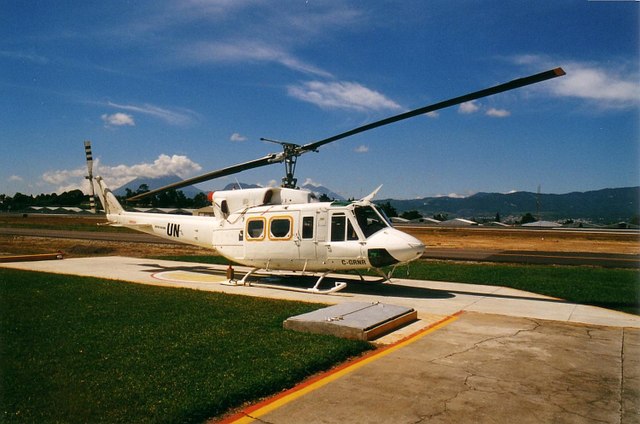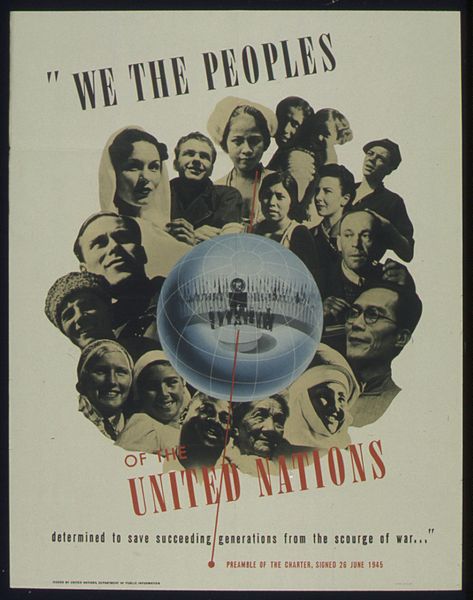History of United Nations peacekeeping
The United Nations Peacekeeping efforts began in 1948. Its first activity was in the Middle East to observe and maintain the ceasefire during the 1948 Arab–Israeli War. Since then, United Nations peacekeepers have taken part in a total of 72 missions around the globe, 12 of which continue today. The peacekeeping force as a whole received the Nobel Peace Prize in 1988.
14th Prime Minister of Canada, Lester B. Pearson a Nobel Peace Prize laureate
Canadian peacekeeper in 1976 wearing the distinctive UN blue helmet
Alpine Helicopters contract Bell 212 on MINUGUA peacekeeping duty in Guatemala, 1998
UN Soldiers in Eritrea as part of UNMEE. Photo by Dawit Rezene
Charter of the United Nations
The Charter of the United Nations (UN) is the foundational treaty of the United Nations. It establishes the purposes, governing structure, and overall framework of the UN system, including its six principal organs: the Secretariat, the General Assembly, the Security Council, the Economic and Social Council, the International Court of Justice, and the Trusteeship Council.
UN Charter
The United Nations Office at Geneva (Switzerland) is its second biggest centre after the UN headquarters in New York City.
United States World War II poster containing the Preamble to the Charter of the United Nations
World War II poster with the first line of the Preamble, "We the peoples of the United Nations"








